I am looking for a method or an algorithm which would allow me to recognize and pair sets of points from two different images, for the purpose of stereo vision.

The attached picture presents what I have at the moment: 2 cameras are aligned on the Y axis and slightly offset on the X axis, looking at a set of points. I am able to track and get the 2D positions of each of these points on the two camera images (IMG0 and IMG1).
As such, I have two lists of 2D coordinates:
L0 = { a0, a1, a2, a3, a4, a5, a6 }
L1 = { b0, b1, b2, b3, b4, b5, b6 }
Now, in order to carry out triangulation to get the 3D position of each point, I need to know which point on image IMG1 corresponds to a which point on IMG0. Both camera see the exact same set of point, with the same overall shape, but obviously, due to slight distortion and to the camera being offset on the horizontal, the 2D coordinates do not match from an image to the other.
Ideally, the point matching algorithm I am looking for would result in a list such as:
List = {a0-b0, a1-b1, a2-b2,...}
The order of the list doesn't matter as long as I am sure each point is paired with the right one from the second image.
I have been looking at several papers presenting stereo mapping algorithms, but I didn't find anything relevant to my problem as most algorithm are based on heavy image feature recognition, which is not suitable in my case where I want to quickly process everything in real-time. The closest solution I seemed to find is the point matching algorithm presented here, but once again this seems too heavy for my issue.
Any help would be greatly appreciated.